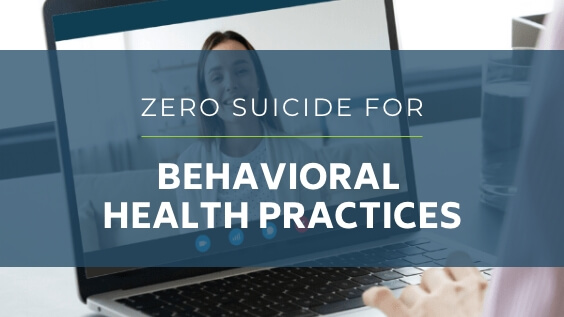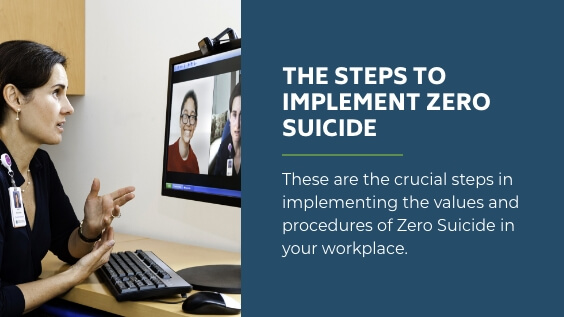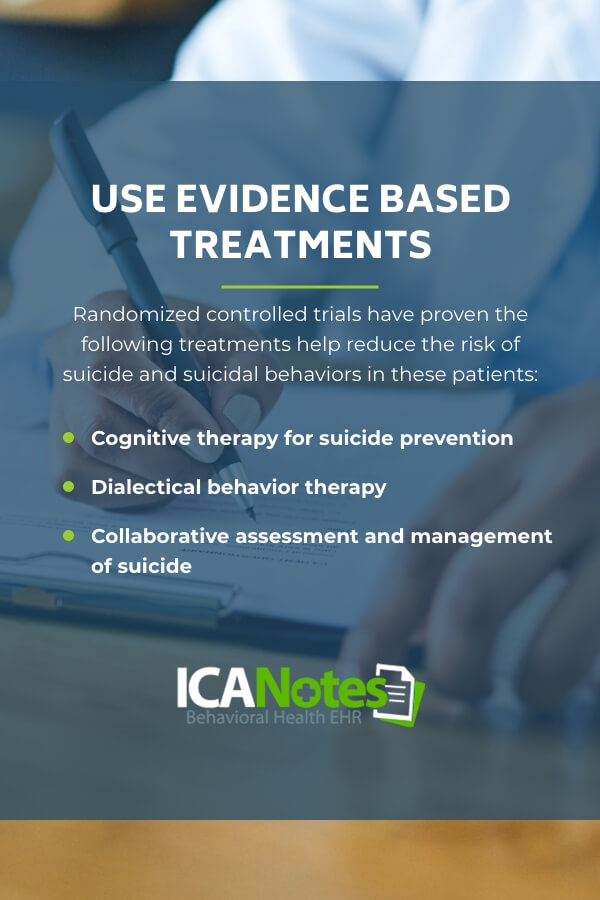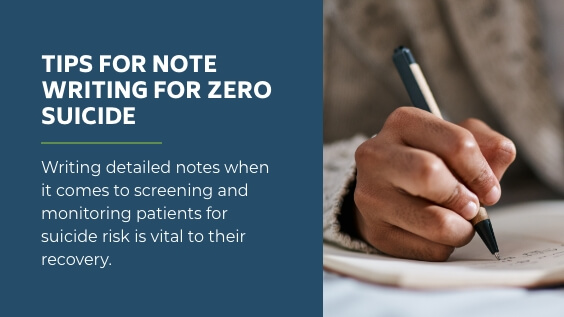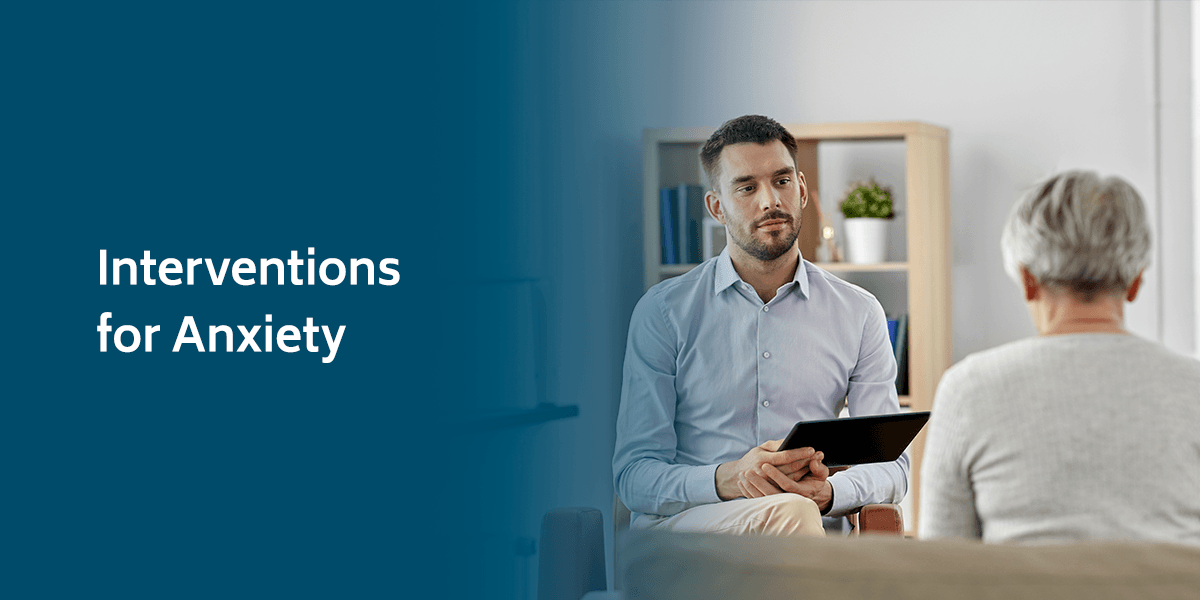Zero Suicide for Behavioral Health Practices
If you're a healthcare professional, you care about your patients. You want them to have the best chance at recovery. You may wonder how you could've helped those who commit suicide even though they've seen a professional for their suicidal thoughts. There is a way to potentially help patients contemplating suicide, and it's to implement the Zero Suicide model. This model details actions healthcare professionals can take to reduce the risks of their patients committing suicide later on, even after seeking help.
Help close the gaps and take part in a system-wide approach to help those who struggle with suicidal thoughts. Learn what Zero Suicide is, the values behind it, the steps to implement it, the benefits of it and tips for note writing.
Table of Contents
- What Is Zero Suicide?
- The Values Behind Zero Suicide
- The Steps to Implement Zero Suicide
- Why Behavioral Therapies Should Implement Zero Suicide
- Tips for Note Writing for Zero Suicide
- Be a Part of Zero Suicide Today
What Is Zero Suicide?
Zero Suicide is a model that aims to implement transformative change in the healthcare world, focusing on improving suicide care. It is a commitment to implement behaviors in the healthcare industry that could lead to zero suicides for those who've seen a healthcare professional for suicidal ideology.
The concept of Zero Suicide began in 2012 when it became a part of the National Strategy for Suicide Prevention. It is essential in changing how suicidal patients are screened and taken care of.
The Values Behind Zero Suicide
Zero Suicide, as a model and a commitment, operates on the core belief that the number of people who commit suicide can be decreased and even eliminated. It also understands that systematic steps can be taken to make sure those with suicidal thoughts feel seen, cared for and accepted. One of these steps would be to make sure support is accessible. Another way is to turn research-based methods into actions that healthcare professionals can take to reduce suicide deaths.
Let's take a look at more of the values behind this model so you can better understand the thinking it has stemmed from:
- Hope: Instilling hope in patients to conquer their suicidal thoughts is paramount in making sure this commitment succeeds in saving lives.
- Recovery: Focusing on a patient's recovery and how it can work for your patient as an individual is important in their overall success in recovering.
- Care: Treating patients with care involves treating them with the compassion and gentleness they need to feel comfortable and safe in your care and further care.
The Steps to Implement Zero Suicide
These are the crucial steps in implementing the values and procedures of Zero Suicide in your workplace.
1. Change Culture
You must understand that those in leadership roles are just as important to the success of Zero Suicide as the staff who care for suicidal patients. It's best to help your staff understand that suicide can be prevented and let them know how and why with research-based evidence. It's best to do all of this in a safe and non-judgmental environment, so this environment can translate over to your patients and create a culture that supports them.
Zero Suicide views leadership as a system-wide approach. It's essential for more than one person, leader or department to engage in a change of culture. You and your staff need to believe that suicide can be prevented with proper effort and care.
2. Train a Caring Workforce
Suicidal patients must feel cared for when they're in the presence of staff members. You never know if your patients have had bad experiences with the healthcare system that have caused them to distrust it and feel more suicidal and hopeless. These patients, in particular, need to feel that there is hope in getting help.
Training a caring workforce involves helping staff understand what words or actions might traumatize or stigmatize a patient. It will also include training your staff to engage with patients in a confident, calm and positive manner. When your staff has the necessary training to offer proper suicide care, patients can also believe that treatment can work.
3. Implement Comprehensive Screening and Assessment
Screening and assessing patients who present with suicidal thoughts is important in whether patients get the care that matches their symptoms. These screenings and assessments must not leave anything up to interpretation. One way to achieve this is by standardizing screening tools. This standardization is a good way to ensure all patients at risk are pinpointed and given the proper care.
Zero Suicide describes identification as planning suicide care rather than predicting suicide. Practices should perform risk screenings at intake and regularly after intake, documenting when these screenings occur.
4. Use a Suicide Care Management Plan
Make sure your patients understand that they are at risk for suicide but can overcome those feelings if they follow a comprehensive treatment plan. It's best to help patients develop a safety plan for when they are feeling suicidal. This safety plan could include calling a helpline or a loved one.
Make sure the safety plan makes sense for that individual patient. For example, if the patient has no one close to them, you wouldn't suggest calling a friend as part of their plan.
Before your patient leaves your care, make sure they understand the resources available to them and the ones you've established for them. For example, you can set them up with an initial appointment to see a therapist soon after you release them. Understand that you play a vital role in encouraging a patient to seek help that best fits them. You might explain why a certain therapist's background would be helpful to that patient to encourage engagement.
5. Use Evidence-Based Treatments
It's of utmost importance to use evidence-based treatments when caring for suicidal patients. Randomized controlled trials have proven the following treatments help reduce the risk of suicide and suicidal behaviors in these patients:
- Cognitive therapy for suicide prevention
- Dialectical behavior therapy
- Collaborative assessment and management of suicide
Even if a patient is only in your care briefly, you can still implement these approaches in how you converse with them. Be sure to train your staff to use these approaches carefully.
6. Transition Patients With Hand-Offs and Supportive Contacts
After a patient is released from a psychiatric treatment center, they can be at a high risk for suicide, which is why patients must feel they will be cared for and safe after they leave your facility. Explaining to patients who will be looking after their mental health when they leave you and how that facility will continue their care is paramount in ensuring patients feel safe and comfortable.
Even though continued care is essential for patients, only half of them get outpatient care for the first week after their release from a psychiatric hospital, and as many as one-third of them get no care in the month after their release.
The following are ways you can support your patients through their transition to outpatient care:
- Use appointment reminders
- Set up bridge appointments
- Use caring contacts
7. Improve Policies and Procedures
It's important to collect data on your patients frequently and store them in a secure area or program. This will allow your staff to evaluate patient care outcomes. Address those outcomes in a safe environment, where you can also assess your loyalty to the Zero Suicide model. See how closely your practice is following the model, and identify areas in need of improvement.
Why Behavioral Therapies Should Implement Zero Suicide
Suicide is closely intertwined with mental health disorders and substance abuse disorders, which is why it's important for those who work at these organizations to recognize the signs of suicidal thinking and behaviors. Even if a patient is struggling with a seemingly unrelated issue, it's important to screen every patient for suicide risk.
If you work closely with people who may be at risk for suicide, you've been given a position to spot and treat this risk. The following groups of people are at risk for suicide:
Those in Emergency Departments or Hospitals
A patient at risk for suicide may be admitted to an emergency department or hospital because of other symptoms. These symptoms might include challenges with mental health, chronic pain or challenges caused by substance use disorders. Even though behavioral specialists who work at these places only briefly have contact with a patient, this contact is important in reducing their risk of suicide.
By helping patients get set up with your hospital's outpatient behavioral services, you may save their lives.
Juveniles in Justice Settings
Any staff members who are in contact with children in juvenile justice settings should be trained to recognize and treat suicidal behavior and thoughts. Treating them with compassion instead of isolating them or consistently restraining them is important in ensuring children don't develop more frequent or severe suicidal thoughts. Even if a child doesn't have a past of suicidal tendencies, they should still be screened often.
Seniors at Living Centers
Seniors are at risk for suicide because of feelings of isolation, depression or hopelessness. Screening for suicide risk should take place frequently in senior living centers to help reduce suicide. Seniors need to get ongoing, person-centered care that recognizes who they are as individuals.
Veterans
Veterans are at risk for suicidal ideation, often accompanied by challenges with PTSD or physical complications from serving in the Army. It's even estimated that 22 veterans a day die by suicide, so it's vital for those who work with veterans to recognize and create a plan to reduce the suicidal ideation and behaviors in their patients.
Those With Disorders That Cause a Higher Risk for Suicide
People that have disorders such as depression or chronic pain are at a higher risk for suicide. It's vital for the healthcare professionals providing them with care to screen them for suicide risk and go forward with treatment if risk is detected.
Tips for Note Writing for Zero Suicide
Writing detailed notes when it comes to screening and monitoring patients for suicide risk is vital to their recovery. Let's look at questions you can ask a patient and things you can look for in a patient that will help you write these detailed notes.
Questions to Ask
It's important to ask a patient who is being screened for suicide risk questions about their desire to commit suicide, past suicide attempts or recent suicidal desire. If any of these questions raise a red flag, then a full suicide risk assessment should occur. The following are questions you might ask a patient so you have a more detailed look into how they're feeling and why:
- Do you feel suicidal now?
- Have you felt suicidal in the past two months?
- Have you felt suicidal in the past?
- Have you attempted suicide in the past two months?
- Have you attempted suicide in the past?
- Is there anything going on in your life that is causing your suicidal thoughts and behavior?
- What caused you to reach out for help?
- What have you done to help you feel better in the past when you've felt suicidal?
What to Look For
It's important to note the following if they appear to be relevant to your patient:
- Sadness or moodiness: Does your patient appear sad? Are they often frowning and slumped over? Do they have frequent mood changes?
- Isolation: Does your patient spend most of their time alone? Does your patient have any motivation to interact with others or take part in social activities?
- Loss of Interest: Has your patient lost interest or pleasure in activities they previously enjoyed, like reading or drawing?
- Lack of care in appearance: Does your patient appear to have unwashed clothes or hair? Does your patient not seem to care about their appearance?
- Disturbed sleep patterns: Does your patient sleep most of the day or not at all? Do they report feeling tired?
If you're writing notes on a patient and the answer to any of these questions is yes, you might consider screening them for suicide risk.
Be a Part of Zero Suicide Today
You want to save the lives of your patients, and we want to help you do it. At ICANotes, we have an online electronic note writing and medical record-storing system to make keeping track of your patient's information easy.
Our system allows you to keep a secure document library, paperless client records and downloadable notes and files. We even have note templates designed explicitly for progress plans, notes, psychological evaluations and more.
If you want to learn more about us, request a demo or a free trial today.
Sources
- https://zerosuicide.edc.org/about
- https://zerosuicide.edc.org/toolkit/zero-suicide-toolkitsm
- https://zerosuicide.edc.org/toolkit/lead
- https://zerosuicide.edc.org/toolkit/train
- https://zerosuicide.edc.org/toolkit/identify
- https://zerosuicide.edc.org/toolkit/engage
- https://zerosuicide.edc.org/toolkit/treat
- https://cams-care.com/about-cams/
- https://zerosuicide.edc.org/toolkit/transition
- https://zerosuicide.edc.org/about/framework
- https://zerosuicide.edc.org/toolkit/improve
- https://youth.gov/youth-topics/youth-suicide-prevention/increased-risk-groups
- https://www.ncbi.nlm.nih.gov/pmc/articles/PMC5916258/
- https://www.sprc.org/populations/military-veterans
- https://www.hhs.gov/answers/mental-health-and-substance-abuse/does-depression-increase-risk-of-suicide/index.html
- https://www.sprc.org/system/files/private/event-training/handout-1_risk-factors-for-suicide-among-people-with-chronic-pain_508compliant.pdf
- https://www.sprc.org/sites/default/files/Screening%20for%20Suicide%20Risk.pdf

